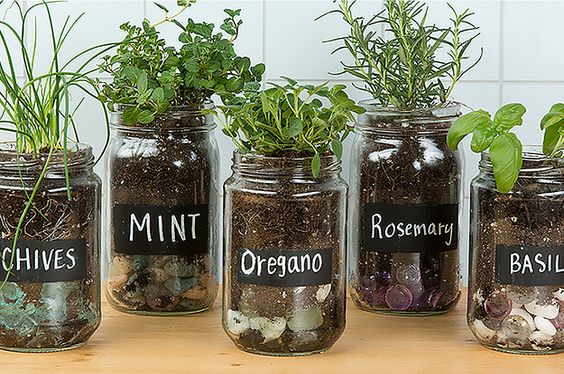Growing Herbs Indoors
- 2021-01-07
- By mkirk
- Posted in The Garden Buzz
By Kathi Thistlethwaite, Colorado Master Gardener
Fill the gap between mid-winter and outdoor gardening in the spring by growing potted herbs indoors. The result is fresh, fragrant herbs to enjoy in cooking and teas. Growing herbs indoors is easy and requires just a few steps to get started.
Soil
Use a good quality potting mix rather than garden soil for your container herbs. Garden soil is too dense and won’t allow proper drainage.
Find the Right Pot
Container choice is a matter of preference largely dependent on the available space. A good option is terracotta pots, which are available in a variety of sizes and are quite porous, making them beneficial to herbs because the characteristic evaporation of terracotta reduces the possibility of overwatering. Terracotta trays will catch excess water, however because they are porous, an extra barrier may be needed.

Water
Indoor herbs will grow better when kept slightly dry. Allow the soil to dry to the depth of about an inch before watering. Misting the leaves occasionally will boost the humidity level around the plants.
Sunlight
A sunny spot with four hours of sun a day is ideal for indoor herbs. If available light is less than ideal, herbs can be grown under fluorescent bulbs or with a grow light.
Fertilizing
Use a light application of liquid fertilizer suitable for herbs every two or three weeks.
Best Herbs to Grow Indoors

Not all herbs do well indoors, but favorites like basil (in a warm spot away from drafts), chives, mint, oregano, parsley, rosemary, and thyme grow well on a windowsill. A collection of themed, small pots of these herbs always looks attractive and lends a gourmet touch to the kitchen.
Herbs can be used fresh or dried. In Colorado’s arid climate, fresh herbs can be air dried in brown paper bags or on a drying rack. These natural, gentle methods protect the essential oils and preserve the color and flavor of the herbs.
Try This Classic Dried Herb Blend
Herbes de Provence: 3 tablespoons dried thyme, 2 tablespoons dried savory, 1 tablespoon dried oregano, 3 teaspoons dried rosemary, 2 teaspoons dried marjoram, 1 tablespoon dried lavender flowers (optional). Place the herbs in an airtight jar, shake to blend and use on meat, poultry, fish, vegetables and in soups. Store dried herbs in the pantry.
Whether starting from seed or plants from the garden center, growing herbs indoors is rewarding and delicious. Bon jardinage!
Interested in more in-depth knowledge on houseplants in general? Consider a science-based course developed by CSU Extension’s Dr. Alison O’Connor. This three hour self-paced class explores the history and benefits of growing houseplants and the conditions needed for success. Access the class for a full year from time of registration. Cost: $60. Register at: https://www.online.colostate.edu/courses/AGBB/AGBB2015.dot
Horticulture Resources
- Garden Buzz Archives
- CSU Extension Resources
- Colorado Master Gardener Program
- Foothills to Plains Native Plant Master Program
- Native Bee Watch Community Science Program
- The Co-Hort Blog
- PlantTalk Colorado
- Soil Testing
- Plant Select
- Emerald Ash Borer
- Japanese Beetle
- Colorado State Forest Service
- Ask an Expert


